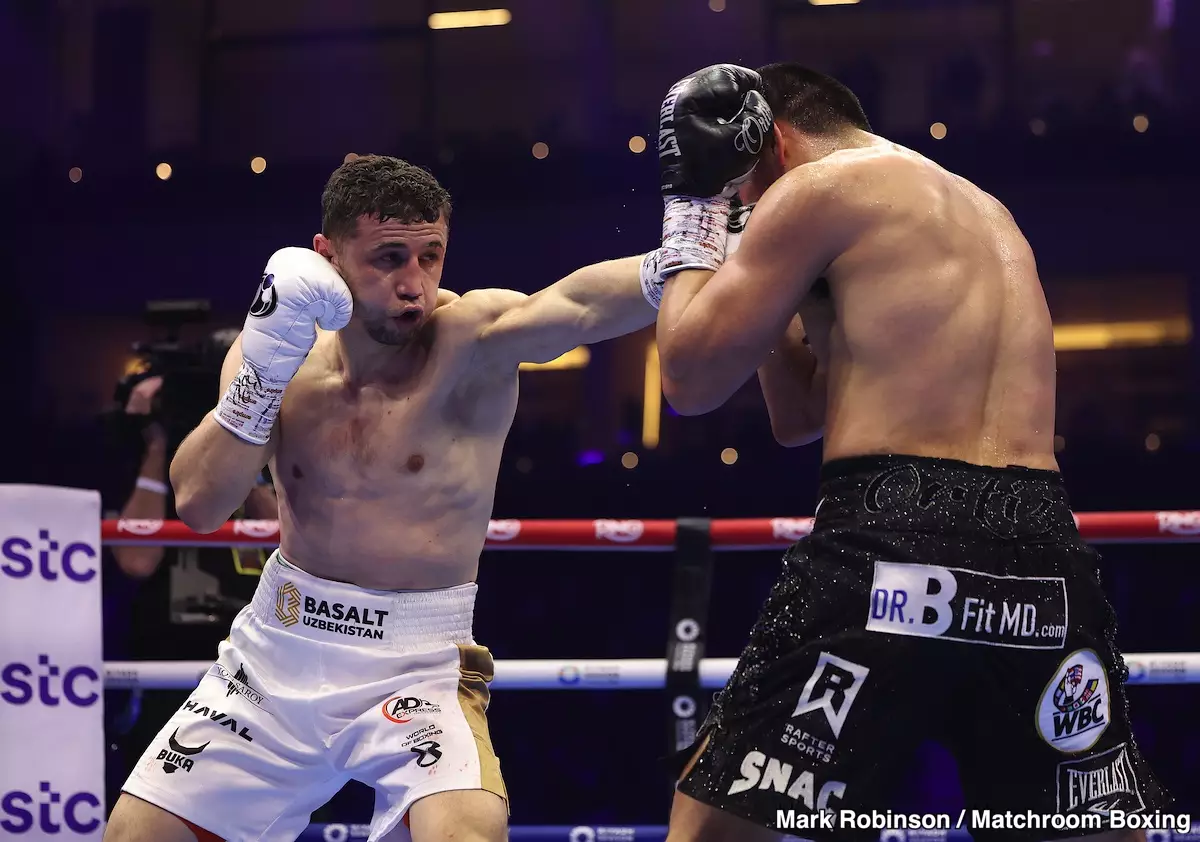On Saturday night at The Venue in Riyadh, Saudi Arabia, junior middleweight boxing witnessed another chapter in the tale of Vergil Ortiz Jr. and Israil Madrimov. Ortiz Jr., the reigning WBC interim champion, remains unbeaten with a record of 23-0, including 21 knockouts. His opponent, Madrimov, entered the ring with a record of 10-2-1 and had demonstrated the potential to be a serious challenger. The bout, filled with tactical maneuvers and skillful boxing, culminated in a unanimous decision victory for Ortiz Jr., but the outcome has not escaped controversy.
As the rounds unfurled, Ortiz Jr.’s performance exhibited a rollercoaster of momentum. Through the first half of the fight, Madrimov appeared to have the upper hand, leveraging a combination of ring movement and potent power shots to keep Ortiz Jr. at bay. The judges, however, saw the fight differently, with scorecards reading 115-113, 115-113, and 117-111 in favor of Ortiz Jr. This divergence between objective analysis and the official scores raises important discussions about the criteria used in judging boxing matches.
Boxing is a chess match disguised as a physical combat sport, where strategy often determines the victor. During the early rounds of the Ortiz vs. Madrimov bout, it became apparent that Madrimov’s conveyance of movement—often referred to as ‘bounce’—allowed him to evade Ortiz Jr.’s power punches while dictating the pace of the fight. Ortiz Jr. was visibly struggling, with noticeable swelling around his eyes that suggested he was being effectively targeted.
Despite the pressure Ortiz Jr. exerted, it was Madrimov who seemed to control the flow of the fight initially, landing clean shots that, theoretically speaking, should have swayed the judges in his favor. Such tactical encounters are beautiful in their complexity, yet maddening when favorable outcomes don’t reflect the reality perceived by viewers. For those observing closely, it was clear that Madrimov’s style was perplexing Ortiz Jr., who depended largely on timing rather than reacting to the genuine threats posed by his opponent.
Oscar De La Hoya, Ortiz Jr.’s promoter, provided an analysis of the fight that seemingly underestimated Madrimov’s prowess. De La Hoya articulated that Ortiz Jr. was “hunting him down” and remarked on the effectiveness of body shots. However, the substantial damage Ortiz Jr. endured during the initial rounds sparked a debate over whether the judges favoring him was a case of “pressure” overshadowing the effective punches landed by Madrimov.
The disparity between popular opinion and the judges’ verdict is a recurring theme in boxing discussions; fans and analysts often find themselves at odds with official scores. In this case, while De La Hoya affirmed his views, many observers pondered the legitimacy of the decision. Despite carrying the title belt, Ortiz’s swollen disposition indicated that he hadn’t emerged entirely unscathed and calls into question whether the judgment accurately portrayed the fight’s dynamics.
Following the match, De La Hoya hinted at the possibility of a future showdown between Vergil Ortiz Jr. and Terence Crawford. The matchup, while intriguing, faces skepticism surrounding Crawford’s willingness to engage with a rising star like Ortiz Jr., particularly if it means accepting less lucrative financial compensation. This aspect of boxing—the economics of matchmaking—functions as a formidable barrier in fostering matchups fans crave.
Crawford’s recent performances and judgments on his win-loss ratios may deter him from facing opponents like Ortiz Jr. unless the financial incentive aligns with a favorable assessment of risk versus reward. Further complicating matters, Crawford’s lucrative engagements, such as his anticipated bout with Canelo Alvarez, could skew decision-making away from high-risk fights against up-and-coming contenders.
The fight between Vergil Ortiz Jr. and Israil Madrimov may have concluded, but its implications resonate throughout the boxing world. As discussions swirl around the controversial decision and future matchups, fighters and promoters alike must navigate the intricate web of strategy, judgment, and personal ambition. The narrative of Ortiz Jr.’s path forward—shaped by both triumph and criticism—will continue to captivate fans and fuel debates on the sweet science’s true essence. As boxing evolves, so too must the principles that govern it, ensuring that the sport maintains its integrity while thrilling audiences worldwide.

